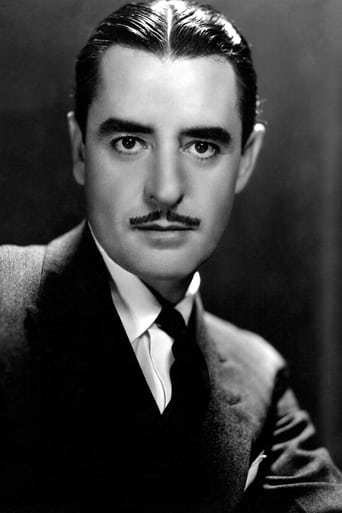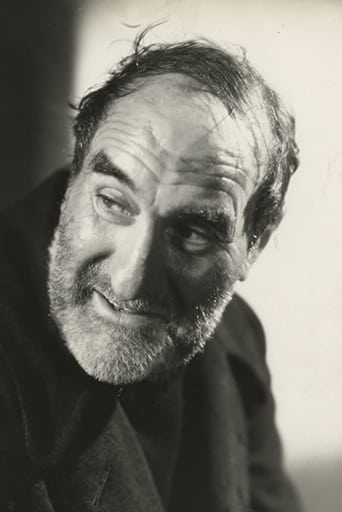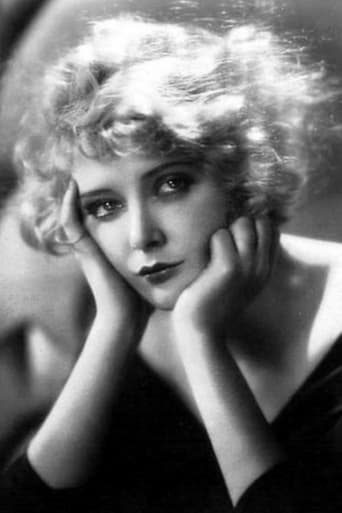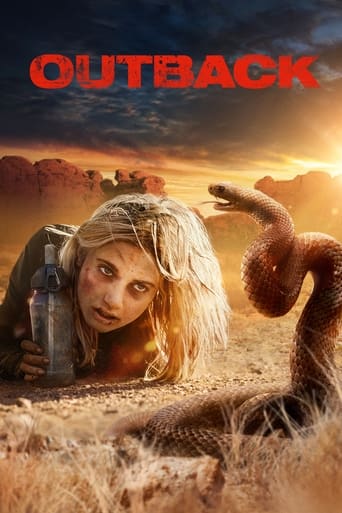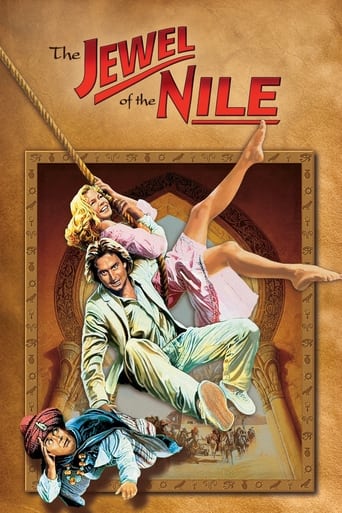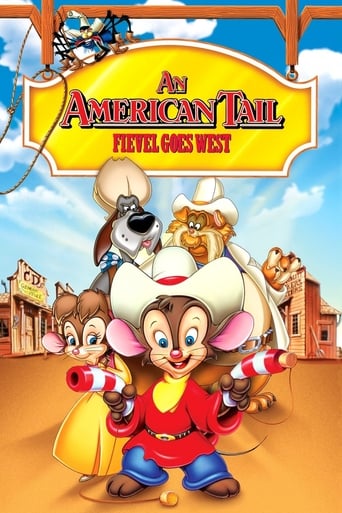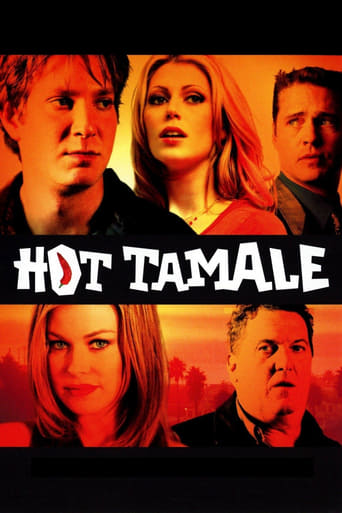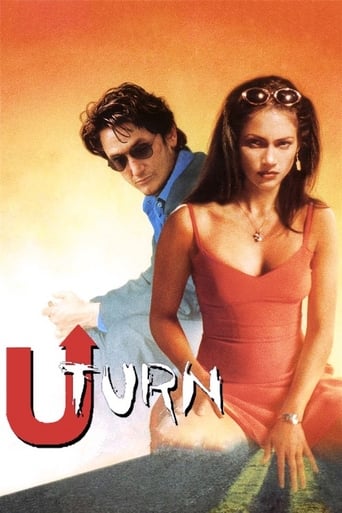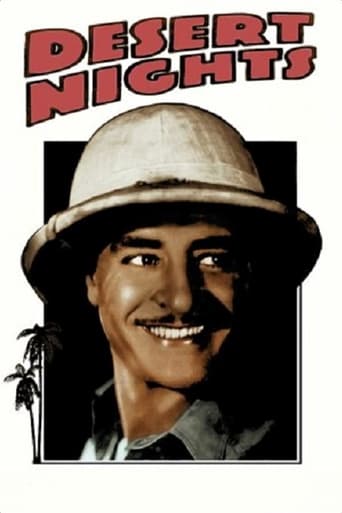
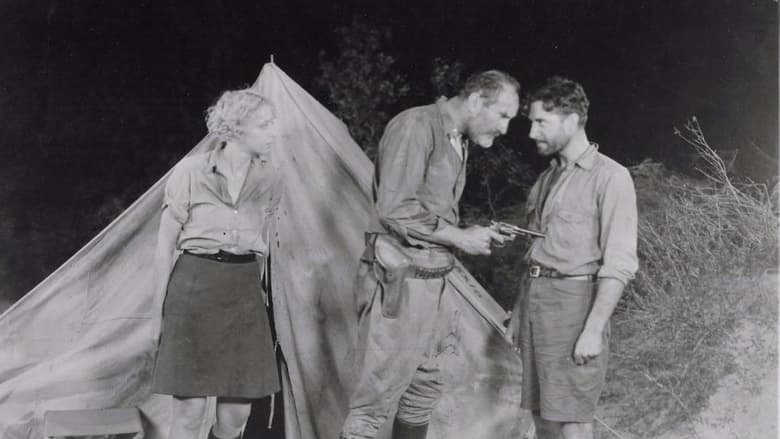
Desert Nights (1929)
A con man with his beautiful accomplice and a hostage steals a half million dollars worth of diamonds but finds they're all lost in the desert without water.
Watch Trailer
Cast


Similar titles
Reviews
Just perfect...
Good movie but grossly overrated
Excellent but underrated film
It’s not bad or unwatchable but despite the amplitude of the spectacle, the end result is underwhelming.
John Gilbert DIDN'T exit pictures because of a high voice. In fact, his voice was a gravelly baritone; not mellifluously romantic, but perfectly suited to the characters he played in his later sound films. It's too bad this was released as a silent.This pre-code desert adventure film features solid performances by the leads (I always perk up when I see Ernest Torrance in the cast list), beautiful photography, and a plot full of tension from shifting power and sexual tension.Gilbert plays a bad good guy-- roguish, gritty, full of dark humor, and willing to play his captors off each other with anything it takes for his survival. One reviewer compares him to Errol Flynn. I can see that, but also the Clark Gable of "Red Dust".A good, suspenseful film with all the advantages of the late silent period.
Warner Archive market an excellent print of Gilbert's Desert Nights (1929). There is one proviso, however. A small amount of footage is obviously missing in a confrontation scene between Gilbert and Ernest Torrence. How much footage is missing from the film is a matter of speculation. The American Film Institute Catalog offers a total footage count of 7,177 feet on 7 reels. This doesn't make sense. There's no way in the world you could wind 7,177 feet on to 7 reels. A standard reel holds 8 or 9 minutes of film. You could squeeze 10 minutes on a reel, but certainly no more. So the original release ran no more than 70 minutes – and most probably 2 to 5 minutes less. As the Warner DVD/TV print runs 62 minutes at 25 frames a second, that means it would unroll in more than 64 minutes in a cinema. At the most, therefore, no more than 5 minutes is missing. This small break doesn't mar my enjoyment of the movie, which is certainly one of William Nigh's best. Mr Nigh is definitely not a director with any sort of a cult following. To put it plainly, he's a hack. Most connoisseurs do their darndest to avoid watching any of his 120 movies. Yet towards the end of the silent period, he was highly regarded and managed to land some prestige assignments including this movie, plus Across to Singapore (1928) – not a bad picture at all, very well produced, starring Ramon Novarro and Joan Crawford – and Mr Wu (1927) with Lon Chaney at the height of his popularity. In 1930, Nigh directed Lord Byron of Broadway. This total disaster put an end to his flirtation with "A" movie studios. For the rest of his career, he dwelt exclusively on Poverty Row. On Desert Nights, however, Nigh (who also produced) was not only working with a superior cameraman, James Wong Howe (noted both for his artistry and his ability to light scenes quickly), but had the services of a brilliant cast in our John Gilbert, Ernest Torrence, Mary Nolan trio. Any movie with any one of these three would qualify as a must-see item. Put them together and the sparks really fly. The desert locations are also striking. William Axt has contributed a most effective music score. In all, I think M-G-M made the right decision to produce this movie as a silent with music and sound effects. Spoken dialogue would have undermined the mood and drawn attention to plot implausibilities.
There's not much distinctive about William Nigh's direction of "Desert Nights," unless you consider anachronisms distinctive. This being a late silent film, you might expect fluid camera work, tracking shots, and other editing techniques that by this time so beautifully conveyed the eloquence of the silent cinema aesthetic. But with the fast approaching obsolescence of the medium it's clear from this film that MGM was only interested in turning out a filler product, and Nigh was willing to oblige. The result is a film that, were it not for the 1929 fashions and automobiles, has the look and feel of early 1920s desert melodrama. In fact, the film's one truly memorable scene, featuring a waltz, depends on the synchronized score for its notability--a sign of the movies' obsession with sound over visual storytelling. John Gilbert, his career by this time quickly slipping through his fingers, plays the hero who is not given the chance to act very heroically. His metaphoric emasculation is evident from the amount of time he spends either tied up at the mercy of his captors or dying of thirst. He is denied almost every opportunity to display his physical prowess or to come to anyone's dramatic rescue--partly because there's no one around worth saving. The plot is full of holes (why didn't the crooks just shoot Hugh Rand instead of taking him with them?), and the unfortunate and abrupt loss of footage at the dramatic confrontation with Ernest Torrence spoils what should have been the climax of all that has come before it. We're left with a rather limp and silly conclusion back where it all started, with Torrence uttering the kind of line that surely inspired every Scooby Doo villain, and Gilbert safely back behind a desk.On a more positive note, mention should be made of Mary Nolan, who brings a certain presence to an under-developed role. She and Gilbert do display chemistry in their scenes together (especially the waltz), and Ernest Torrence delivers a characteristically accessible and natural performance. He is truly one of the most engaging character actors of the silent screen. The print shown on TCM, while truncated, is beautifully preserved, and the synchronized score is generally quite good, again notably in the waltz scene. Finally, the film is worth viewing for John Gilbert. Though this film is ultimately beneath him and can't bear comparison to such greats as "The Big Parade," "The Merry Widow," "The Show," and his appearances with Garbo, he still conveys the wordless charisma that so defined him, but ultimately confined him to the silent screen.
Kidnapped by jewel thieves, the manager of a British diamond mining operation in Africa spends long DESERT NIGHTS plotting his escape...John Gilbert is most enjoyable in this lively yarn, his last starring performance in a silent film (he would appear in the William Haines' picture A MAN'S MAN, which was released a few months after DESERT NIGHTS, but that was in a cameo role as himself). His verve & vitality propel the (sometimes silly) plot and make the movie into a very enjoyable action picture.Ernest Torrence - in a fine portrayal - makes a florid, hammy villain. Beautiful Mary Nolan enacts the sort of woman any red-blooded male viewer would gladly walk the Kalahari to gain.By 1929 silent films were truly an art form in their own right. (Witness the piano sequence early in the picture, with Gilbert & Nolan waltzing on the porch, to see the kind of nuance possible in this not-so-silent medium.) MGM was at the apex of the industry & Jack Gilbert was the Studio's greatest male star. Which is what makes DESERT NIGHTS so poignant. Before the year ended silent cinema, that most emotionally penetrating of all the photo dramas, would be dead & Gilbert's career would be dying. A new crop of stars would be on the rise & Noise would be king.


